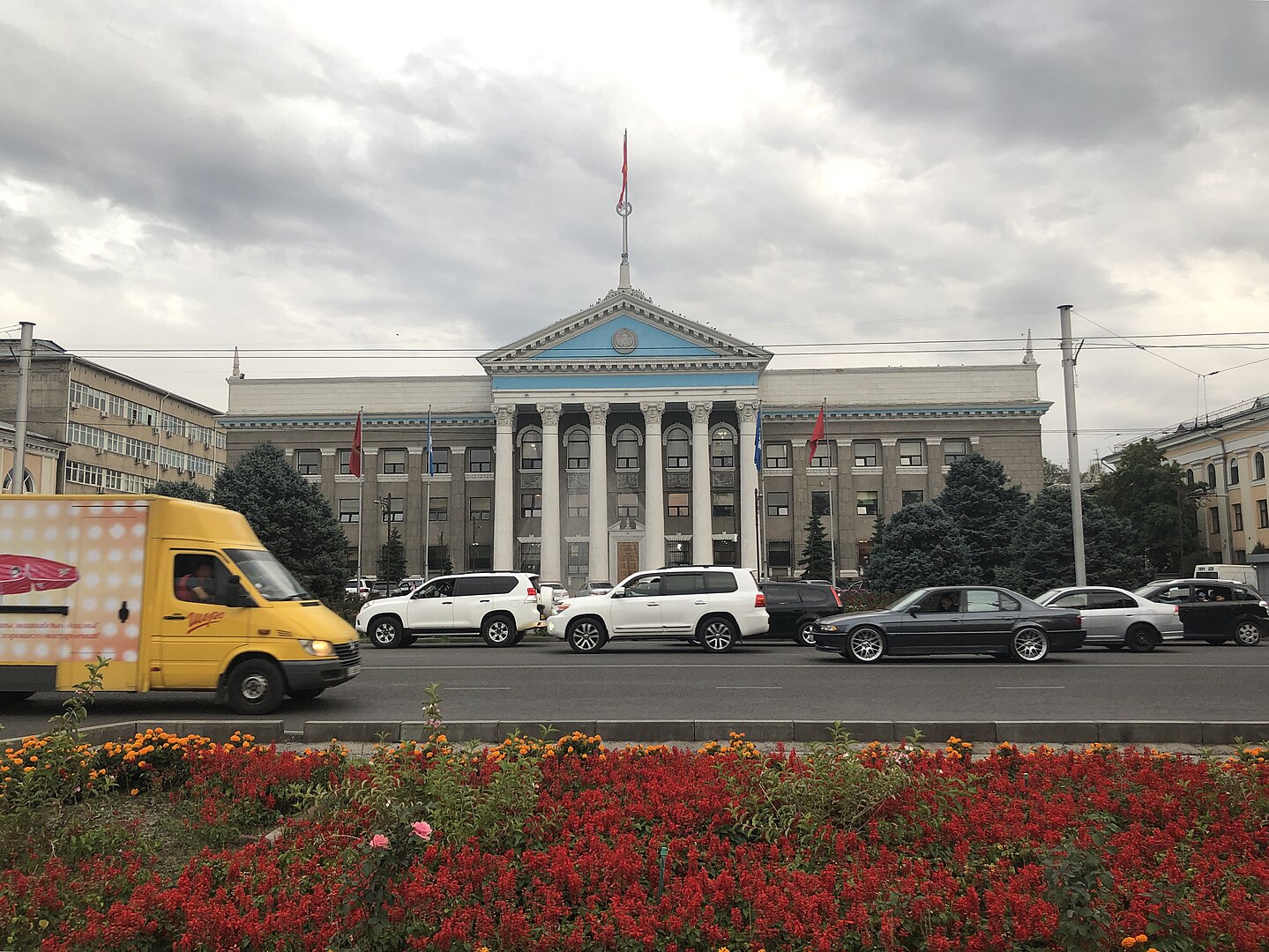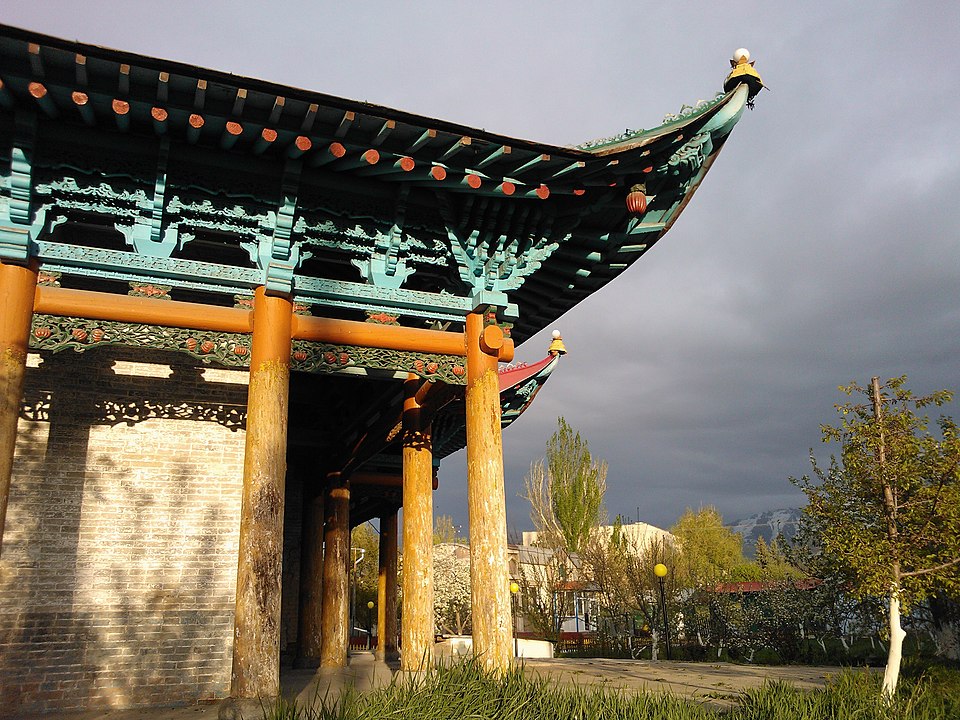
Local Reporting Overstates PRC’s Economic Impact on the Kyrgyz Republic
Local Reporting Overstates PRC’s Economic Impact on the Kyrgyz Republic
Executive Summary:
- Beijing pushes an inaccurate narrative in Kyrgyz media, overstating the positive impact of its investment in and development aid to Kyrgyzstan and claiming that this makes it a trustworthy neighbor, according to analysis of thousands of local media sources.
- A survey of 1,000 Kyrgyz showed that over three-quarters of locals believe this narrative and admire the People’s Republic of China (PRC), mainly for its contributions to the local economy, as well as for its level of development.
- In depth interviews suggest that positive views of the PRC among Kyrgyz are likely not due to favorable media coverage, but due to the prevalence of PRC-made goods available in Kyrgyzstan.
Censorship is the most prominent tactic deployed by the People’s Republic of China (PRC) to manage public memory. Yet suppression of information constitutes only a fraction of Beijing’s efforts to curate narratives for overseas audiences. The manipulation of information through the active insertion of positive messaging is also a prominent feature and can be effective when taking local conditions into account.
In the Kyrgyz Republic, the PRC has been successful in creating a positive perception of itself among the local population. This has influenced choices made by the whole population, from government officials at the highest level in Bishkek to families in rural villages across the country. In the early months of the pandemic lockdown in 2020, I chatted over the phone with 20 Chinese-speaking Kyrgyz youth. I asked them about their decision to learn Chinese and their reasons for pursuing studies in the PRC. Surprisingly, hardly any of them had initially wanted to learn the language. Instead, many did not have a choice but were pushed to do so by their families, who told them that language proficiency would unlock financial opportunities for them. Unfortunately, a diploma from a Chinese university is worth little in the Kyrgyz job market, except for roles as translators for PRC companies or as petty traders of products manufactured in the PRC (Diplomat, December 12, 2022).
Reality Belies Local Reporting on the PRC
Assessing where positive messaging had been manipulated by the PRC was a challenge. With a team of researchers, I combed through over 4,000 local media items on PRC affairs from the past decade and found significant inaccuracies in reports that exaggerated the role of the PRC’s contribution to the local economy. These items came from two local media outlets that cooperated extensively with the PRC. Analysis of the inaccuracies was recorded in an unpublished fact-checking report titled “A Benevolent Neighbor and the Greatest Nation: Chinese Narratives in the Kyrgyz Republic.” The narratives constructed in these media sources centered on the quantity of PRC investment and governmental aid in Kyrgyzstan to frame the PRC as a benign and magnanimous neighbor. Frequently, figures and statistics were deployed without comparison to a baseline or other countries’ contributions and with little meaningful analysis, providing a distorted picture of the reality on the ground.
Driving around Kyrgyzstan, visible traces of economic development as a result of PRC investment are hard to come by. Nearly one million Kyrgyz work in Russia as migrant workers. Their remittances amount to as much as 30 percent of gross domestic product (GDP) (US State Department, July 17). The Kyrgyz Republic is an extremely young country, with 2.5 million people under the age of 18 out of a total of roughly seven million, so nearly a quarter of working-age Kyrgyz are migrant workers in Russia (Unicef, 2022).
Between 1995 and 2021, PRC companies invested $3.5 billion in the Kyrgyz Republic, making it the top investor in the country. Most of this went to low value-add sectors such as extractive industries and had minimal effect on the local economy, neither toward its GDP nor local employment (National Statistical Committee of the Kyrgyz Republic, 2021). PRC aid has similarly had little impact. The PRC has reportedly delivered between $105 million and $262 million in total aid since 1992 (numbers vary in different sources) (Kazinform, March 14, 2017). Meanwhile, the United States allocated $1.22 billion to the Kyrgyz Republic between 1992 and 2010 alone (Congressional Research Service, 2013). Russia has also outspent the PRC on this metric, transferring over $250 million to the Kyrgyz Republic between 2012 and 2020 and writing off more than $700 million in debt cancellations since 2005 (RBC, October 14, 2020). The PRC tends not to send large amounts of aid to Bishkek, preferring to channel resources to local elites indirectly rather than empowering the central government directly. Much of the aid that has been sent, particularly in earlier decades, went to fund border guards along the frontier between the two countries.
Prevalence of PRC Goods Enforces Positive Perceptions
For a long time, I could not wrap my head around the success that Beijing’s media spin has had in influencing Kyrgyz people’s choices, especially given the disjuncture with the reality on the ground. Following the narrative study, my team and I investigated further. We wanted to study at scale whether the Kyrgyz population genuinely bought the exaggerated narrative about the PRC’s economic contributions. To do this, we privately commissioned local opinion poll organization Central Asia Barometer to conduct a nationally representative survey over the summer of 2022, focusing on media consumption habits and perceptions of the PRC.
According to the survey, 763 out of 1,000 respondents reported having a favorable view of the PRC. These results were not much of a shock, as we had been following incidents of censorship of those who raise issues related to the PRC for several years. As such, practically zero mentions can be found in local media of the PRC’s abuses in Xinjiang and minimal concern about its acquisition of territories beyond its borders (Jamestown Perspectives, April 12).
An open-ended question in the survey asked respondents to explain their views. Over 30 percent said that they held a favorable view of the PRC because of the importance of Chinese-made products to the Kyrgyz economy; 23 percent said they looked up to the PRC because it is a developed country; 17 percent believed that the PRC is providing economic assistance to the Kyrgyz Republic; and 10 percent cited a variety of additional reasons, such as the richness of Chinese culture, the PRC’s good governance, its friendly foreign policy, and its provision of education to Kyrgyz students at PRC universities. The remaining 20 percent did not provide answers.
The survey reinforced our anecdotal views on the level of success that the PRC’s positive messaging has had on the population, especially as many of the respondents’ reasons aligned closely with narratives pushed by Beijing. The most unexpected finding was the significant impact of tangible Chinese-made products on the population’s impressions of the PRC. This suggests that the tailored insertion of manipulated positive messaging centered on investment and aid data does not contribute to favorable perceptions as much as the tangible, lived experience people have with Chinese-made products in their daily lives. The abstract figures were not as persuasive as the clothes and furniture people have come to surround themselves with.
Favorability Not Primarily Due to PRC Messaging
We carried out 63 follow-up in-depth interviews between August 2022 and February 2023 with selected survey respondents to find out more about their reasoning. Many expressed a view that the wide availability of Chinese-made products and lack of alternatives constituted a form of economic dependence on the PRC, which they had internalized as a reason for viewing the PRC positively. Many repeated this sentiment strongly. “I have a positive view of China because the goods we use in our life, the food we eat, and our clothes come mostly from there,” a 32-year-old male government worker told us on the phone (Author’s interview, August 2022). Another 30-year-old male government worker said, “If imports from China stop, Kyrgyzstan’s population will die out. Literally everything is supplied from China” (Author’s interview, January 2023).
The minority among those polled who said that they had an unfavorable perception of the PRC used similar reasoning to support their viewpoints. One 34-year-old female government worker explained, “I have a very unfavorable attitude toward China because its low-quality products and food have overwhelmed us and are affecting us very negatively. We are very much dependent on China economically because there is no other choice for us” (Author’s interview, August 2022).
The prevalence of Chinese-made products on the Kyrgyz market is the primary basis of the population’s attitudes toward the PRC. For many, this has led to either a positive view of their neighbor or at least a neutral resignation at the lack of alternatives. For others, it has provoked concerns over an unhealthy level of dependence. This dependence, however, is something that co-opted local elites have created over the past two decades (Jamestown Perspectives, April 12). During this time, PRC investments have not gone into building a manufacturing sector and creating jobs. Rather, PRC companies operating in the country extract precious resources—frequently employing workers from the PRC rather than training and hiring locals—and then sell manufactured items back to the Kyrgyz as consumer goods.
Of note is an apparent discrepancy between the achievements of the PRC’s ends and its failure to do so by design. Its preferred narratives, focusing on investment and aid, have not taken hold. It is unclear why these are the narratives deployed, though it is likely that local editors themselves viewed them as the most convenient to promote and did not challenge them. The reverse of this narrative, the notion that the PRC seeks to build country-level dependence through its commodities trade, is not given an airing in local media.
Conclusion
The effectiveness of the PRC’s positive messaging depends on local conditions. As such, should critical debates occur or if fact-checking efforts are made available and accessible to locals, it could unravel. My fact-checking report and the results of the national survey my team and I commissioned remain unpublished locally due to institutional interference on the ground. These twin tactics of suppressing negative reports and promoting positive narratives go hand in hand with the PRC’s efforts to curate a positive image at the local level.


